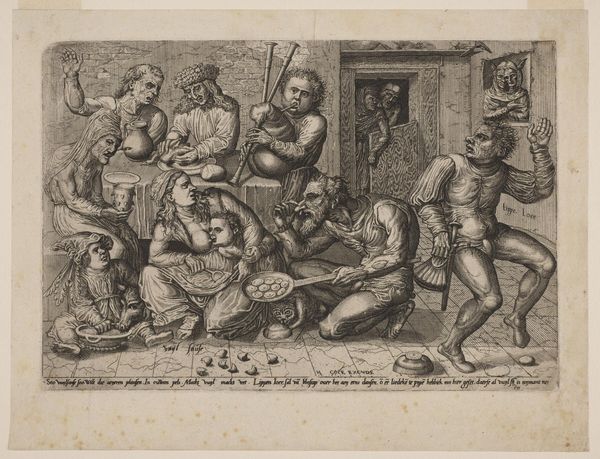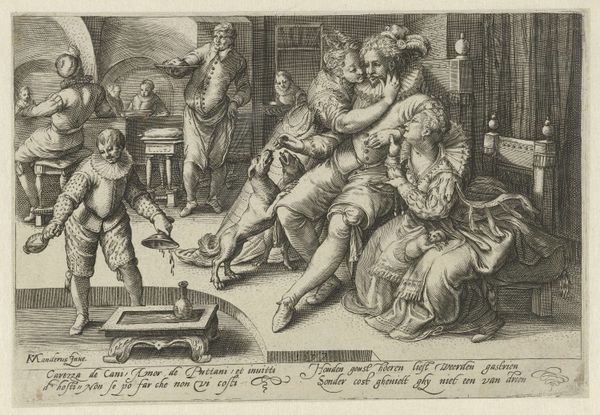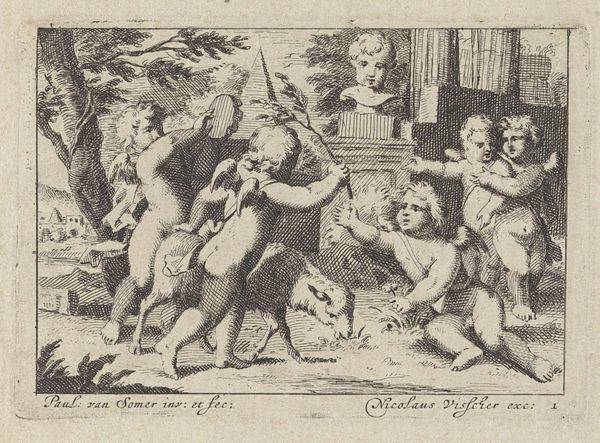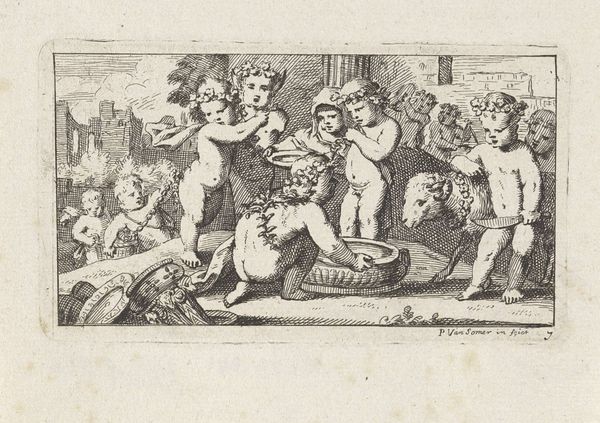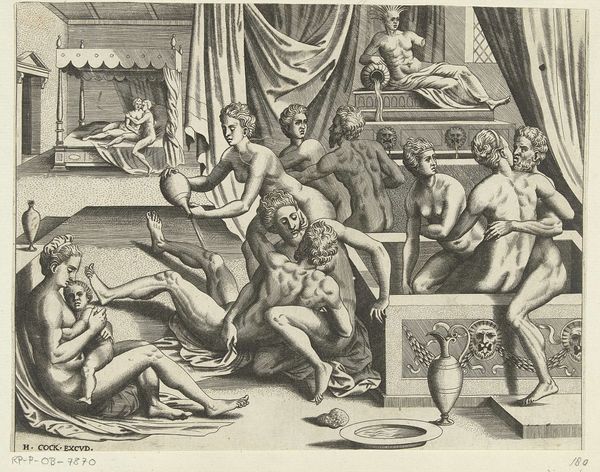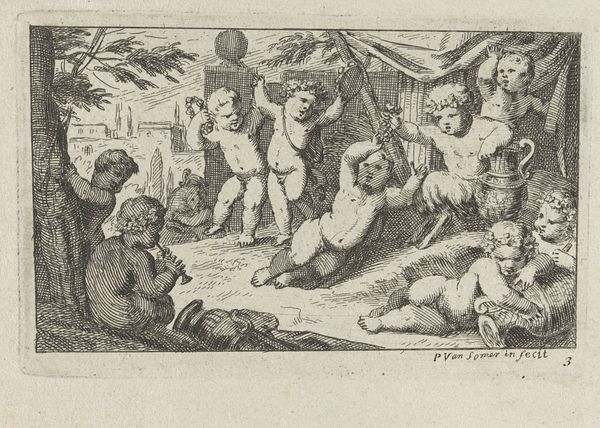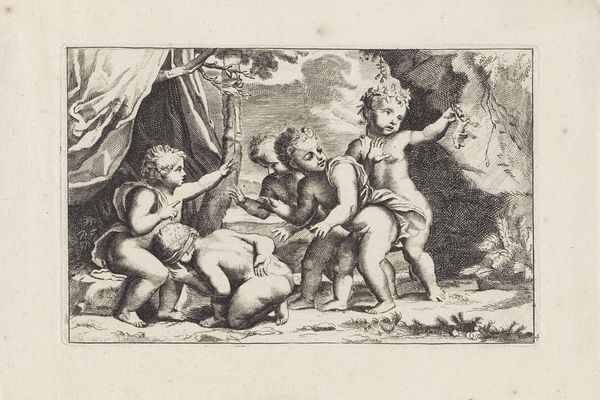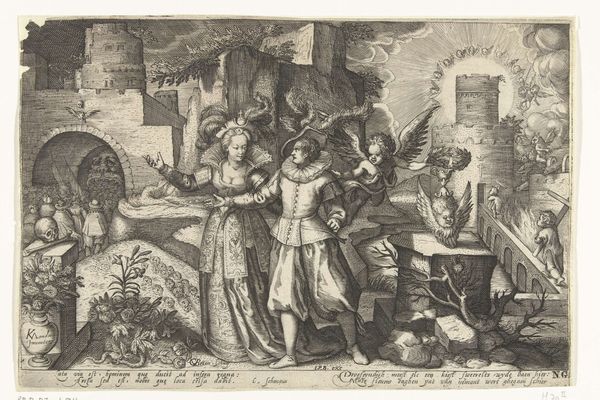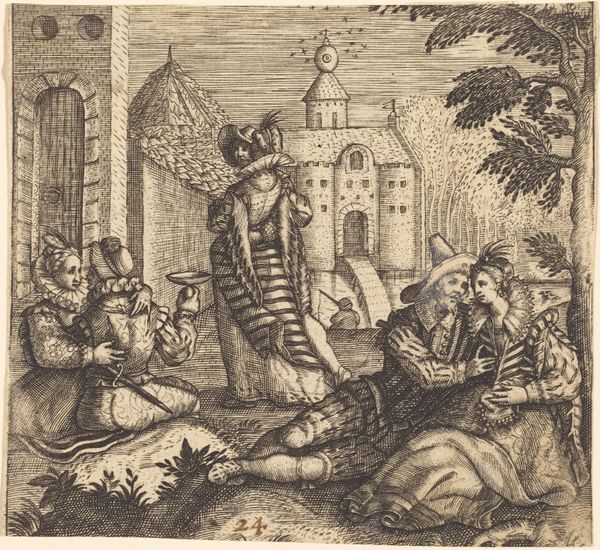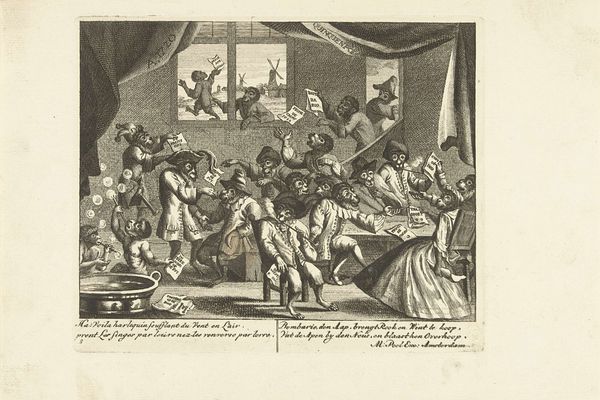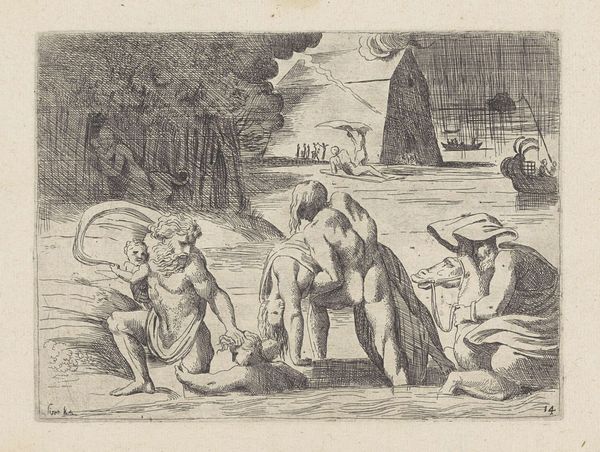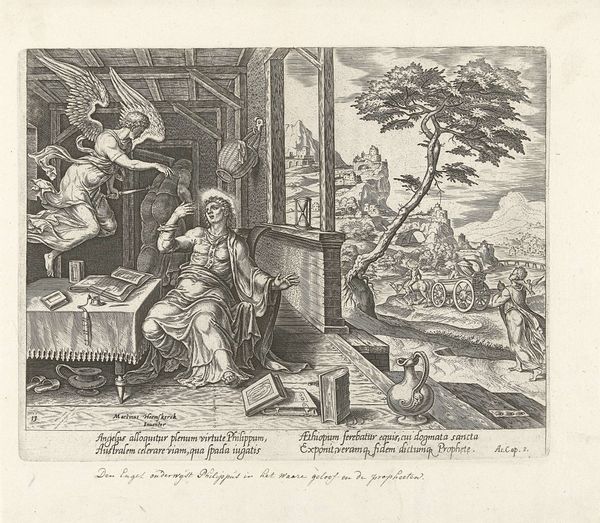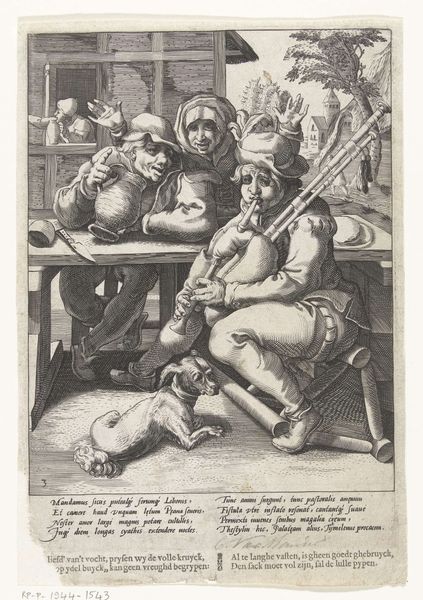
print, etching, engraving
#
baroque
# print
#
pen sketch
#
etching
#
pencil sketch
#
old engraving style
#
landscape
#
figuration
#
genre-painting
#
engraving
Dimensions: height 83 mm, width 118 mm
Copyright: Rijks Museum: Open Domain
Paul van Somer II created this etching, "Drie putti met een mand met bloemen," sometime between 1659 and 1704. The cherubic figures, or putti, frolic in a garden setting, embodying the innocence and carefree spirit often associated with childhood. During this time, the Dutch Republic was experiencing its Golden Age. This was a period of unprecedented economic prosperity and cultural flourishing. Yet, beneath the surface of prosperity, social hierarchies and expectations shaped the lives of individuals. Somer, positioned within this context, navigates the delicate balance between idealized beauty and the realities of everyday existence. The putti, with their ambiguous gender, challenge traditional notions of masculinity and femininity. They present a vision of humanity unbound by societal constraints. In their uninhibited joy, one can't help but feel a sense of longing for a world where innocence and freedom reign supreme. Ultimately, Somer invites us to embrace the beauty and complexity of human experience, reminding us of the transformative power of art to inspire and uplift the spirit.
Comments
No comments
Be the first to comment and join the conversation on the ultimate creative platform.
